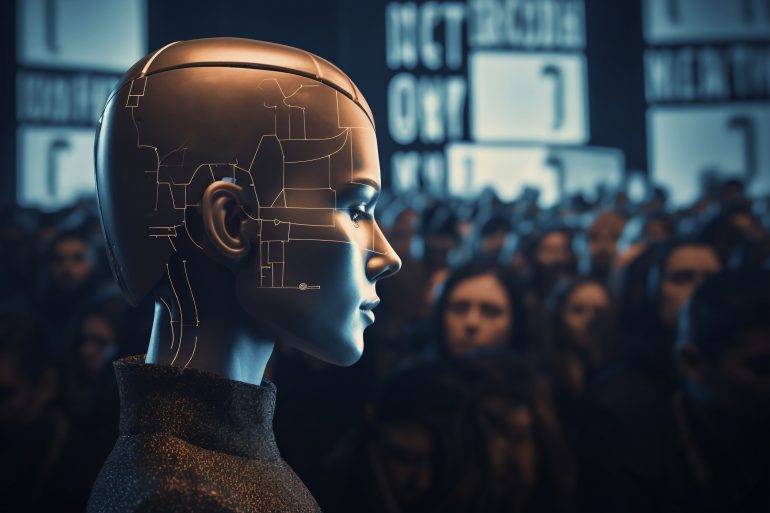• AI originated in the 1950s and evolved significantly by the 1980s, transitioning from basic programming to more advanced machine learning systems.
• Early personal computers operated on simple “if/then” logic, but “expert systems” in the 1990s marked the start of knowledge-based AI models.
• Machine learning allows computers to learn and improve through pattern recognition but requires oversight to avoid generating inaccurate results.
• AI powers everyday applications like email filtering, facial recognition, and fraud detection, but faces challenges related to data bias and privacy concerns.
• The rise of AI could lead to job displacement and create new opportunities in data analysis, AI management, and cloud development.
• Regulatory frameworks are emerging to ensure responsible AI applications, particularly in industries like media and finance.
• AI is transforming sectors like news media, reshaping how content is created and distributed.
Main AI News:
Throughout the 20th century, advancements such as the Industrial Revolution, space exploration, nuclear energy, and the rise of computers laid the groundwork for artificial intelligence (AI). While AI may now seem commonplace, its origins trace back to the 1950s, gaining momentum by the 1970s and evolving significantly by the 1980s with the shift from mainframe systems to personal computers.
Initially, computers operated on simple “if/then” programming, solving repetitive tasks. However, in the 1990s and 2000s, “expert systems” emerged, allowing machines to handle knowledge-based tasks using language models and predictive capabilities. This transition marked the beginning of machine learning (ML), where computers improve their performance by analyzing large data sets to recognize patterns and make predictions without explicit programming.
Like a child learning through observation and repetition, AI systems refine their models through trial and error, edging closer to accurate results over time. However, too many iterations can lead to exaggerated or incorrect outcomes, known as “hallucinations.” To prevent this, supervisory algorithms guide and contain the learning process, ensuring it remains productive and accurate.
Today, machine learning powers many everyday applications like email filters, facial recognition, and financial fraud detection. Despite its potential, AI presents challenges, particularly with data bias and privacy concerns. Bias in training data can lead to discriminatory outcomes, and AI’s ability to process massive datasets in the cloud creates security risks, particularly in financial systems where fraud detection is crucial.
As AI evolves, it brings both opportunities and risks. Automation may displace some jobs, but it will also create new roles in data analysis, machine learning management, and AI regulation. Regulatory frameworks and standards, such as SMPTE’s Engineering Report (ER) 1010:2023, are beginning to shape AI’s use in industries like media, ensuring responsible and consistent applications.
AI’s impact also transforms sectors like news media, revolutionizing how news is created, distributed, and consumed. As AI continues to disrupt industries, it’s essential to balance innovation with ethical considerations, addressing issues like bias, data security, and the potential for job displacement. To navigate this AI-driven future, businesses must combine technological advancement with thoughtful leadership and oversight.
Conclusion:
AI’s evolution presents both significant opportunities and challenges for the market. Businesses must adapt by integrating AI-driven solutions that improve efficiency and innovation while addressing ethical concerns such as data security, bias, and the impact on the workforce. Organizations must ensure compliance and maintain responsible AI practices as regulatory frameworks develop. Overall, AI’s growth will continue to reshape industries, creating a dynamic landscape where the ability to leverage AI effectively will be a key competitive advantage.

